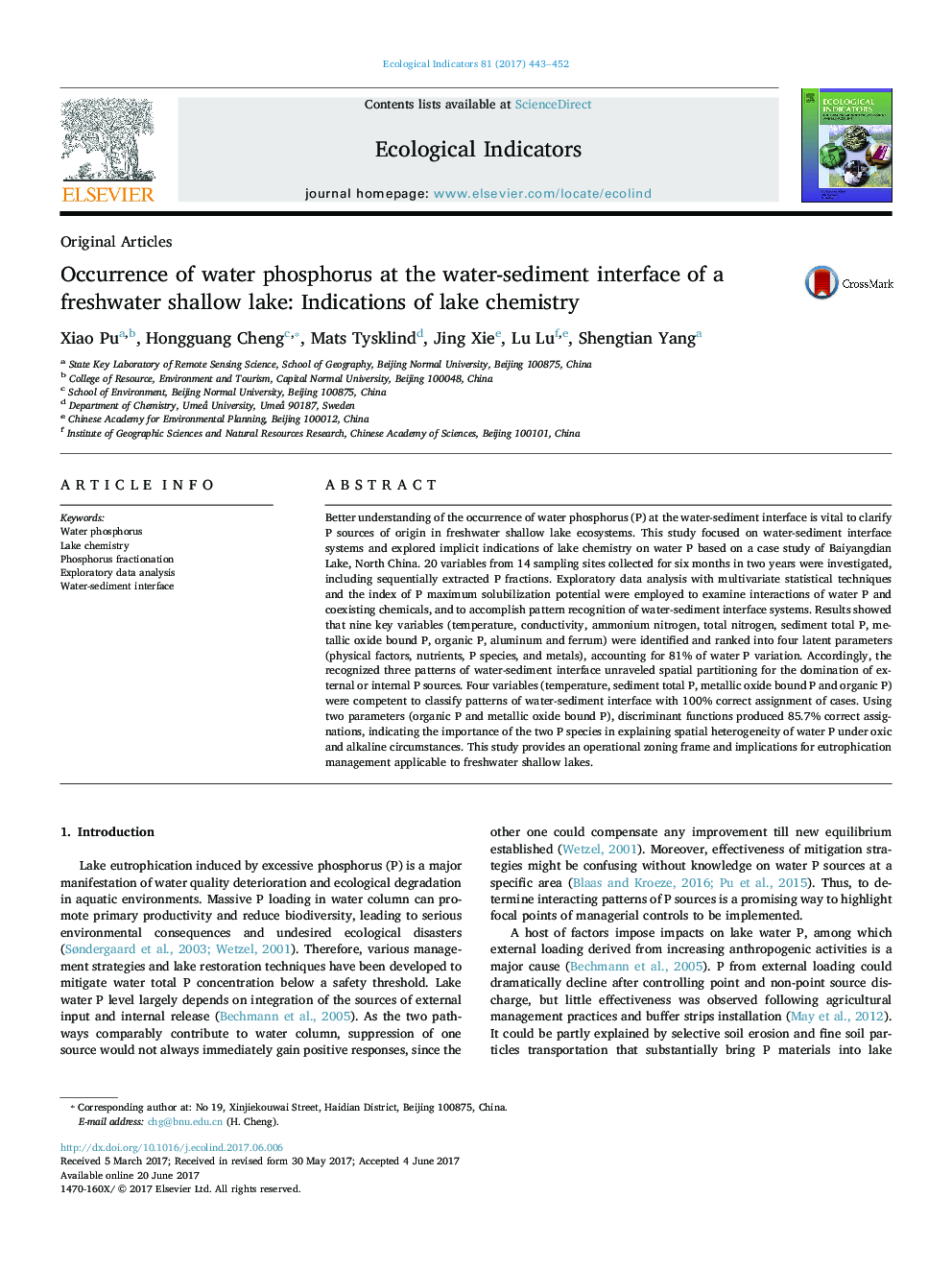| Article ID | Journal | Published Year | Pages | File Type |
|---|---|---|---|---|
| 5741447 | Ecological Indicators | 2017 | 10 Pages |
â¢Domination of P sources at water-sediment interface in a shallow lake was assessed.â¢Lake chemistry accounting for water P variability was identified by APCS-MLR.â¢Patterns of sediment-water interface were recognized by exploratory data analysis.â¢NaOH-P and Org-P mainly explain water P occurrence in oxic and alkaline conditions.
Better understanding of the occurrence of water phosphorus (P) at the water-sediment interface is vital to clarify P sources of origin in freshwater shallow lake ecosystems. This study focused on water-sediment interface systems and explored implicit indications of lake chemistry on water P based on a case study of Baiyangdian Lake, North China. 20 variables from 14 sampling sites collected for six months in two years were investigated, including sequentially extracted P fractions. Exploratory data analysis with multivariate statistical techniques and the index of P maximum solubilization potential were employed to examine interactions of water P and coexisting chemicals, and to accomplish pattern recognition of water-sediment interface systems. Results showed that nine key variables (temperature, conductivity, ammonium nitrogen, total nitrogen, sediment total P, metallic oxide bound P, organic P, aluminum and ferrum) were identified and ranked into four latent parameters (physical factors, nutrients, P species, and metals), accounting for 81% of water P variation. Accordingly, the recognized three patterns of water-sediment interface unraveled spatial partitioning for the domination of external or internal P sources. Four variables (temperature, sediment total P, metallic oxide bound P and organic P) were competent to classify patterns of water-sediment interface with 100% correct assignment of cases. Using two parameters (organic P and metallic oxide bound P), discriminant functions produced 85.7% correct assignations, indicating the importance of the two P species in explaining spatial heterogeneity of water P under oxic and alkaline circumstances. This study provides an operational zoning frame and implications for eutrophication management applicable to freshwater shallow lakes.
Graphical abstractDownload high-res image (237KB)Download full-size image
